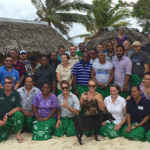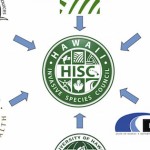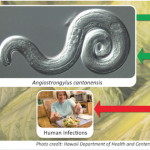The Hawaii Invasive Species Council is proud to announce a new, ongoing series of informal lunchtime presentations to facilitate information sharing regarding invasive species. This series aims to provide a forum for updates from HISC ...
Read More HISC Brown Bag #1: PILN Meeting 2016
slider
Invasive species impact many parts of our lives, economy, and environment, and dealing with invasive species requires many hands all working together. Hawaii is a model for how different state, ...
Read More HISC on TV: Representative Cindy Evans’ Show “Now What?”
The International Union for the Conservation of Nature (IUCN) will hold its 2016 World Conservation Congress (WCC) in Hawaii, from September 1 to 10. The IUCN WCC is the Olympics ...
Read More Invasives at the IUCN WCC, Sep 1-10 2016
Visit https://fightthebitehawaii.com to learn about mosquito-borne illnesses (including zika, dengue, chikungunya, and others) and how to minimize your risk. DEPARTMENT OF HEALTH DAVID Y. IGEGOVERNOR VIRGINIA PRESSLER, MD DIRECTOR FOR IMMEDIATE ...
Read More DOH Launches “Fight the Bite” Campaign for Mosquito-Borne Diseases
HISC_RTI_position_paper – Executive Summary: Research and technology are vital functions to Hawaii’s management strategy against alien invasive species. The Hawaii Invasive Species Council should strive to maintain a consistent funding mechanism ...
Read More Position Paper: HISC Research and Technology Working Group, adopted June 26, 2016
The Hawaii Invasive Species Council released its FY17 Proposal Guidelines for interagency projects relating to invasive species prevention, control, outreach, and research. This is an intragovernmental budgeting process, not a ...
Read More HISC FY17 Grant Application Evaluation in Process
DEPARTMENT OF HEALTH DAVID Y. IGEGOVERNOR VIRGINIA PRESSLER, MDDIRECTOR FOR IMMEDIATE RELEASE May 13, 2016 16-030 JOINT TASK FORCE ESTABLISHED TO COMBAT RAT LUNGWORM DISEASE IN HAWAII HONOLULU – The ...
Read More Release: JOINT TASK FORCE ESTABLISHED TO COMBAT RAT LUNGWORM DISEASE IN HAWAII
The Hawaii Department of Health has produced an informational site for residents and visitors seeking information about the Zika virus. Zika is not currently circulating in Hawaii, but the mosquito ...
Read More DOH Provides Information on Zika Risk in Hawaii
From DLNR: FOR IMMEDIATE RELEASE Feb. 26, 2016 HEROES IN THE FIGHT AGAINST INVASIVE SPECIES HONORED State Capitol Ceremony Recognizes Extraordinary Efforts (HONOLULU) – Hawaii’s 4th annual Hawaii Invasive Species ...
Read More HEROES IN THE FIGHT AGAINST INVASIVE SPECIES HONORED AT CAPITOL
High school students from across Hawaii answered a call for submissions to a video contest from the Hawaii Invasive Species Council and the Oahu Invasive Species Committee (OISC). The students created public ...
Read More Student Videos for Hawaii Invasive Species Awareness Week!







